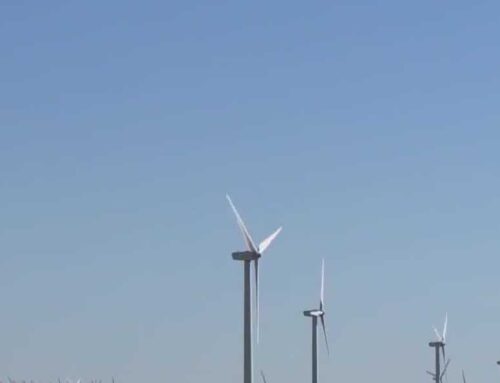Opinion: Trump’s war on renewables is hurting Alaska, crippling America and helping China
October 21, 2025

Donald Trump’s ongoing assault on renewable energy may play well in the oil patch, but it is a costly act of self-sabotage for the rest of America — especially Alaska.
Alaska has long depended on oil, yet it is also one of the most renewable-rich states in the country. State analyses suggest that by replacing part of its oil and gas use with renewables, Alaska could save more than $1 billion by the early 2030s through lower fuel and operating costs.
From the strong coastal winds of Kodiak and Cook Inlet to the hydropower of Southeast and the geothermal resources of the Interior, Alaska’s future could be powered by clean energy. Renewables, particularly wind power, are especially advantageous in small northern communities such as Kotzebue and Unalakleet, where the only alternative is expensive diesel fuel that must be shipped in during the brief ice-free season. Wind-diesel projects there have already shown that local generation can cut both costs and emissions in places far from the grid.
Trump’s phase-down of core wind and solar tax credits, the Department of the Interior’s tighter federal-lands screening for wind and solar, and cancellation of marquee projects all point backward. Analysts warn that reversing federal support for renewables is already chilling private investment, slowing deployment, and risking higher long-term costs for consumers.
Trump’s hostility to renewables, and his repeated false claims that wind turbines cause “massive bird kills” or that solar “doesn’t work at night,” ignore both evidence and economics. Studies show that buildings, vehicles and even domestic cats kill far more birds than wind turbines, which account for less than one-tenth of 1% of human-related bird deaths in the United States.
Modern solar and wind power are among the lowest-cost and safest forms of energy generation in many regions. Across much of the country, new wind and solar projects now produce electricity more cheaply than new coal or gas plants. While Trump talks about “energy dominance,” China and Europe are investing in energy independence. China now produces more solar panels, batteries, and electric vehicles than any other nation.
By rolling back U.S. clean-energy incentives, Trump risks ensuring that the United States will buy, rather than build, much of the technology of the future. That failure is not due to lack of potential. The deserts of the Southwest and the wind-swept plains of the Midwest are among the best renewable resource zones on Earth. With consistent federal policy, modern transmission lines, and adequate storage, these regions could supply large portions of the nation’s electricity at affordable cost.
ADVERTISEMENT
Instead, Trump’s rhetoric and deregulation campaign risk locking us into an aging, carbon-heavy system that the market itself is already leaving behind. Private investment in renewables remains substantial, but 2025 has seen slowing solar deployments and a stagnant development pipeline amid federal policy changes.
The economic and environmental tide is turning, with or without Washington’s encouragement. Trump can ridicule wind turbines and promise a return to coal, but he looks increasingly like a modern-day King Canute, standing at the edge of the sea and ordering the waves to retreat. The tide of low-cost, climate-friendly renewable energy is rising fast.
If we refuse to adapt, the rest of the world will leave us behind.
Stan Jones is a novelist and former journalist. He lives in Anchorage.
• • •
The Anchorage Daily News welcomes a broad range of viewpoints. To submit a piece for consideration, email commentary(at)adn.com. Send submissions shorter than 200 words to letters@adn.com or click here to submit via any web browser. Read our full guidelines for letters and commentaries here.
Search
RECENT PRESS RELEASES
Related Post



